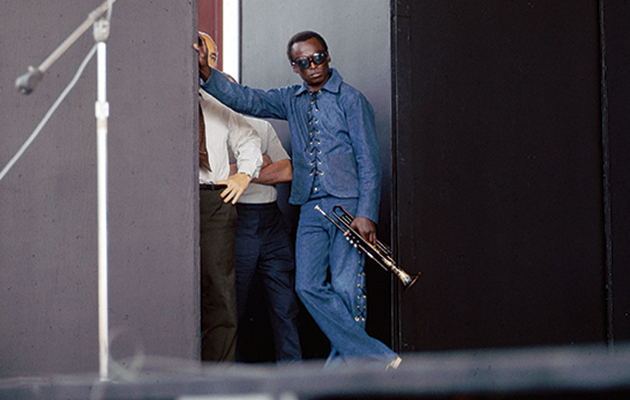SKETCHES OF SPAIN
Columbia, 1960
Produced by Teo Macero, Irving Townshend
Gil Evans, Miles’ collaborator on Porgy And Bess (1958) returns to work on material from the Spanish folk and classical tradition, suggested to Miles by his wife. The effect: stirring, modern and widescreen. Used to great effect in Mad Men Season 1, when Don Draper happens upon a beatnik scene at Midge’s place.
https://www.youtube.com/watch?v=tSGUPsAeL34
JIMMY COBB (DRUMS): Sketches… was a large ensemble, with Gil Evans again. Miles’ wife was a dancer, and one day she said to him, “You have to come and hear this music I’m working with.” Frances was a nice lady – she’d give him ideas about things. It was her that made it happen; the album could have been a tribute to her. So Miles picked out what he wanted, and gave it to Gil, and Gil transcribed and augmented it. Miles was the kind of person who wanted to move things on. It didn’t have to be jazz. It was music – that was what we’re after here. It was Spanish music interpreted by American people. It wasn’t supposed to be jazz. I was with Miles for five years. We were friendly, I used to go by his house, daily when he wasn’t doing anything, check him out, like maybe he would want me to do something for him – take him somewhere if he didn’t have a car. I used to take him to the gym… I’d take pictures of him shadowboxing. This was the best jazz band in the world, so if the money wasn’t right, he wouldn’t agree to it – he’d wait until there was something come along he could agree with. We did pretty good.
_________________
BITCHES BREW
Columbia, 1970
Produced by Teo Macero
Miles convenes a large, young, electric band for this crossover success. Teo Macero writes a pivotal role for himself as Miles’ studio amanuensis, piecing together compositions from long, open-ended studio jams.
JACK DEJOHNETTE (DRUMS): Betty [Miles’ wife] got him into Hendrix and a record by Eric Mercury – Electric Black Man. He does a version of “Hurdy Gurdy Man”, it’s just a killer record. Betty opened him up. He was listening to the Isleys, Blood Sweat & Tears, Sly Stone. That period was fertile ground, with a lot of experimentation going on. Miles had sketches, melodies, basslines, and he let me come up with some grooves. Teo would record everything. As the grooves gathered steam or got to the right space, Miles would conduct another soloist – it might be a keyboard, Wayne [Shorter, sax], Dave Holland [bass]. Miles directed everything. You could compare it to the rock musicians who were spending fortunes in the studio, six months trying to find one groove. But in Miles’ case it was like a work of art being recorded, everything that was going was developed. Miles was in the studio every day taking advantage of that, and of the availability of young musicians he liked. It alienated a lot of staunch jazz fans, but it brought in a lot of other fans, particularly when we played the Isle Of Wight – that was 650,000 people, man. The music of Bitches Brew and Jack Johnson, which is what we were playing, really reached those people, and that’s what Miles wanted to do.



